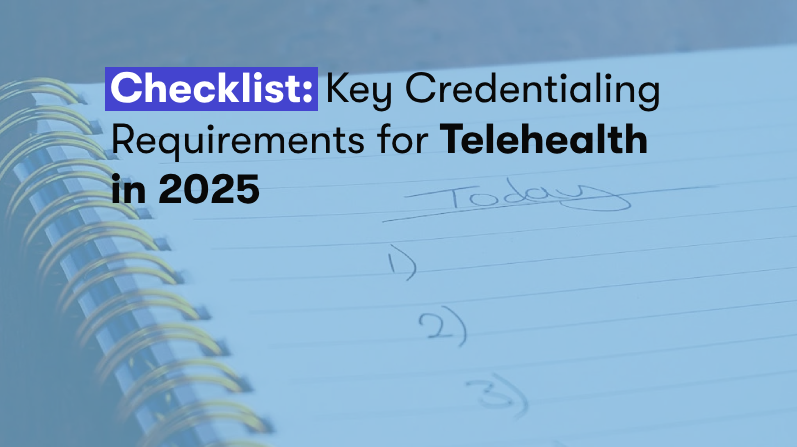
Why manual checks of healthcare credentials should be a thing of the past

We’ve all been there, too many post-it notes and paper strewn all over the desk, an excel spreadsheet that has hundreds - if not thousands of lines to go through. But when you’re a healthcare provider trying to make sure your candidates or employees are compliant, this isn’t where you want to be.
Healthcare providers and the NHS have had an extremely challenging year: helping to maintain staffing levels, recruit personnel for vital roles in new and existing healthcare teams, and filling posts left vacant through staff sickness, often at scale and rapidly.
We’ve seen the UK healthcare sector rebound strongly from the COVID-19 pandemic, not only rising to meet the challenges presented during the past year, but emerging stronger than ever before. This includes the implementation of a world-leading vaccine programme and the emergence of more robust, personnel-focused and efficient practices for care-delivery. However, the ongoing staff shortages in the sector must be addressed - and quickly - if the NHS and private healthcare providers are to continue to deliver high quality care, address backlogs in non-essential services, and provide adequate support to existing staff.
The NHS Priorities and Operational Planning Guidance 2021 outlines a comprehensive recovery plan which lays down clear priorities for the UK healthcare sector as it moves beyond the pandemic.
The guidance focuses on supporting staff recovery, a large part of which is contingent on improving workforce supply.
Streamlining recruitment in healthcare
As any experienced recruiter or HR manager knows, healthcare hiring can be a headache. With a seemingly endless cycle of interviews, references, DBS and professional registration checks, it’s not the fastest - or simplest process.
In order for organisations to be able to fill posts quickly and support the UK healthcare sector in the COVID-19 recovery plan, then it’s crucial that hiring and onboarding of healthcare staff is streamlined and managed in the most efficient way possible, with a significant reduction on manual processes
This is particularly important because high demand for healthcare staff has meant an increasing reliance on non-UK nationals to fill vacant posts, which adds additional complications (such as Right to Work checks and confirmation of international registrations) to the hiring process.
However, despite a pressing need to improve efficiency and speed up recruitment, reports suggest that many healthcare recruiters and HR professionals are still carrying out DBS and professional registration checks of prospective candidates manually. This involves a weekly, physical check of paper and digital records of what could amount to hundreds - even thousands - of bank staff, contractors and prospective candidates.
What’s wrong with manual checks?
The short answer is, everything! Manual checking of staff records introduces the risk of human error, particularly where large numbers are involved and when administrative staff are already managing heavy workloads. Introducing an automated system which can do this work for you will:
- Improve efficiency: freeing up human resources for other, more skilled work
- Improve job satisfaction: by enabling administrative staff to carry out more specialised work and relieving the boredom associated with repetitive manual checks
- Streamline processes: for example with automatic reference checks (and follow-up notifications) for new hires
- Improve compliance: by reducing human error and ensuring all paperwork is up-to-date, it becomes easier to meet the standards laid down by the CQC, taking the stress out of inspections
- Improve patient safety: by ensuring that healthcare staff are properly qualified, have up-to-date references, DBS and professional registration checks, and in-date training, the risks to patients are minimised
- Save money: by increasing efficiency, reducing labour costs associated with the completion of time-consuming tasks and minimising the risk of fines for non-compliance
Automate hiring for a faster, more streamlined approach
For healthcare providers and recruiters looking to stay ahead of the curve in 2021 and beyond, it’s essential to introduce reliable, robust automated systems which make the hiring process as fast and efficient as possible. The right software will not only reduce the risk of human error and improve accuracy, it will also streamline processes whilst improving job satisfaction, compliance and patient safety, providing your employees with peace of mind, knowing they won’t be stressed by too much admin or failure to let poor quality candidates and staff slip through the net.
Looking at the NHS Priorities and Operational Planning Guidance it’s clear that staff wellbeing is a key theme and one that should be prevalent across everyone's working life. If we can reduce manual work and that pile of paper on our desks by a few sheets at a time it’s a welcome start.
If you’re looking for an automated system to assist with hiring, onboarding and compliance then book a demo and find out how we can help.
Find out how Urgent Care provider HUC has drastically reduced time to hire down to as little as three days by automating credentialing and onboarding processes.
3 Reasons Providers Fail CQC Inspections
Are you CQC ready?




















Take Action
Popular Posts




























%20(1).png)



